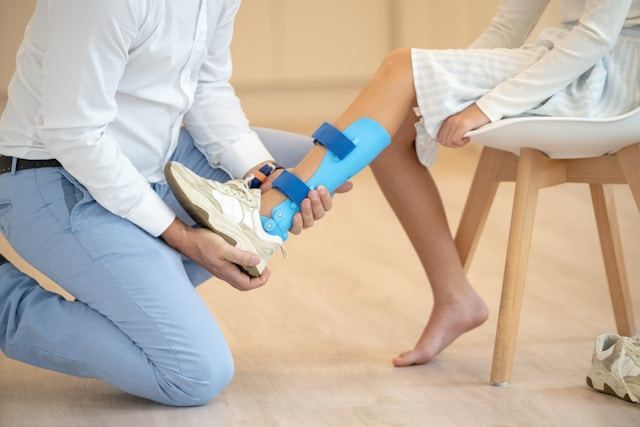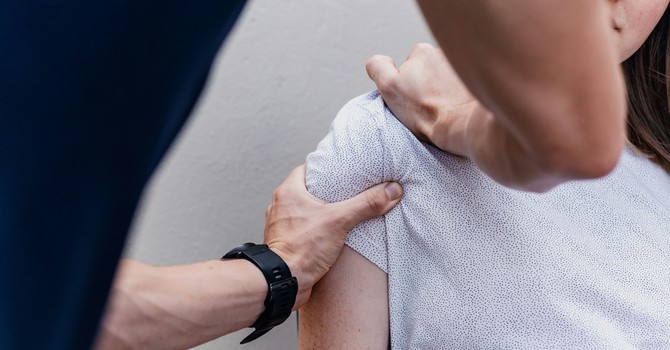
Orthotics can feel like game-changers, whether you’re recovering from a sports injury, dealing with long-standing pain, or trying to get back to your daily routine with more support and less discomfort.
But like anything we rely on regularly, orthotics wear out. So how long do they truly last?
What signs should you watch for, and how do your activities and body changes influence their lifespan?
At Therapointe Physiotherapy in South Edmonton, we empower our patients to move with more ease, regain independence, and stay active, without being slowed down by preventable discomfort.
What Are Orthotics, and Why Do People Use Them?
Support and Alignment Through Custom Fit
Orthotics are custom-made or over-the-counter inserts worn in your shoes to support the feet and correct alignment issues. They're commonly used in treatment of:
- Plantar fasciitis
- Flat feet or high arches
- Knee, hip, or back pain related to improper gait
- Post-surgical recovery or chronic conditions affecting mobility
A Key Part of a Broader Recovery Plan
At Therapointe, orthotics are one of many services we offer in a coordinated care plan. They may complement physiotherapy, massage therapy, or concussion recovery treatment.
How Long Do Orthotics Typically Last?
General Lifespan
Most custom orthotics last 1 to 5 years, depending on use and materials.
Functional orthotics (used for biomechanical correction) made from rigid or semi-rigid plastics can last a full 5 years or longer.
Soft or accommodative orthotics (for cushioning, or diabetic needs) usually last closer to 1–2 years.
Daily Use Impacts Lifespan
Wearing your orthotics all day, every day?
They’ll naturally wear down faster. Fitness enthusiasts, workers on their feet, and anyone in rehabilitation may require more frequent adjustments or replacements.
What Influences How Long Orthotics Last?
Activity Level
Running, walking long hours, or standing on hard surfaces can break down your orthotic materials faster.
Body Changes
Weight fluctuations, pregnancy, surgeries, or injuries can change how your body moves and loads pressure through the feet—requiring periodic reassessment.
Shoe Type
Switching between shoes that accommodate orthotics (like runners or work boots) and those that don’t (flats or heels) can reduce the effectiveness and wear unevenly.
Signs Your Orthotics May Need Replacing
Knowing when your orthotics are no longer serving you is key to staying pain-free and mobile.
Look out for:
Return of Pain or Discomfort
If old symptoms like foot, ankle, or hip pain resurface, your orthotics might need an adjustment.
Visible Wear and Tear
Check for cracked edges, worn-down top covers, or changes in shape.
Shifting in Your Shoe
Orthotics should sit securely within your shoe. If they start sliding or wobbling, they may be worn thin.
How Often Should You Have Your Orthotics Reassessed?
We generally recommend an orthotic check-in every 12 to 18 months, especially if:
- You’ve had a change in activity level
- You’ve started new treatments (like vestibular or TMJ therapy)
- You’ve had ongoing issues with posture or balance
At Therapointe Physio, these reassessments are compassionate, collaborative, and always focused around your changing needs.
Can Orthotics Be Adjusted Instead of Replaced?
Yes, depending on condition and fit.
When Adjustments Work
If your body has changed slightly or you're experiencing minor pressure points, a therapist can often modify the length, add padding, or adjust angles.
When Replacements Are the Better Choice
If your current orthotics are warped, poorly fitting, or showing signs of deep breakdown, new ones may be more effective long term.
Think of it like replacing the sole of a worn-down shoe, it helps maintain proper stride and comfort.
Pairing Orthotics with Other Therapies
Orthotics often work best when combined with personalized physiotherapy or massage.
For instance:
- A runner with plantar fasciitis may benefit from orthotics + shockwave therapy.
- Someone recovering from a motor vehicle accident might use orthotics with vestibular or concussion care.
Therapointe offers a full-circle approach to recovery, which means our team collaborates across services to give you consistent support…all under one roof.
FAQs About Orthotics
Does insurance cover orthotics?
Yes, many private plans cover custom orthotics. At Therapointe, we offer direct billing and work with you to confirm coverage details.
What shoes can I wear orthotics in?
Orthotics fit best in supportive shoes like runners, loafers, or workboots. We can recommend styles that suit your lifestyle and treatment needs.
How do I clean my orthotics?
Use a damp cloth and mild soap on the surface. Never soak or machine wash. Let them air dry.
Do orthotics feel uncomfortable at first?
Some mild adjustment time is normal. If discomfort continues after 2-3 weeks, let your provider know so we can modify the fit.
Will I need orthotics forever?
Not always. Depending on your condition, they might be temporary support during healing, or a long-term tool to maintain mobility.
Are over-the-counter orthotics a good substitute?
For some mild issues, they may help but they’re not tailored to your gait or recovery needs. Custom orthotics often offer better long-term results.
Ready to Reassess Your Orthotics? We’re Here to Help
Whether you’re wearing orthotics for ongoing care or post-injury recovery, knowing when to re-evaluate them can help you stay active, mobile, and pain-free.
Therapointe Physiotherapy in South Edmonton is open 7 days a week, with same-day appointments available to fit your schedule.
With custom care, direct billing, and a welcoming team trusted by our community, we’re here to support your comfort and your freedom to move forward with confidence.

admin
Contact Me


